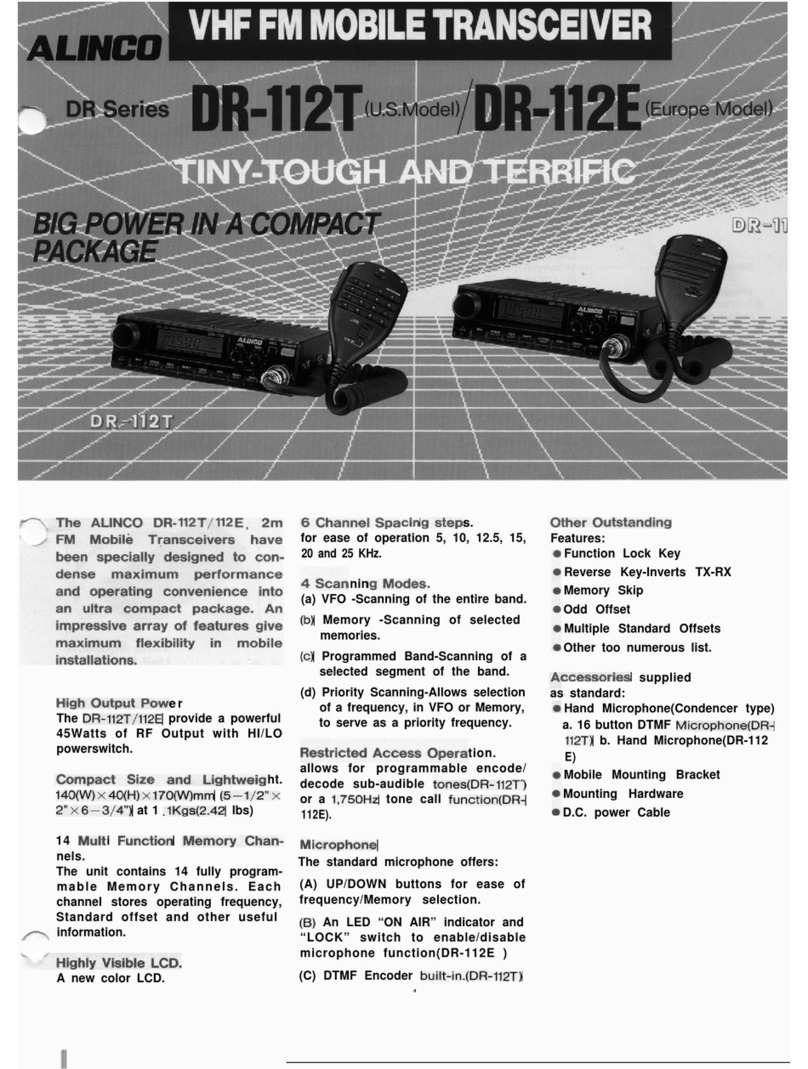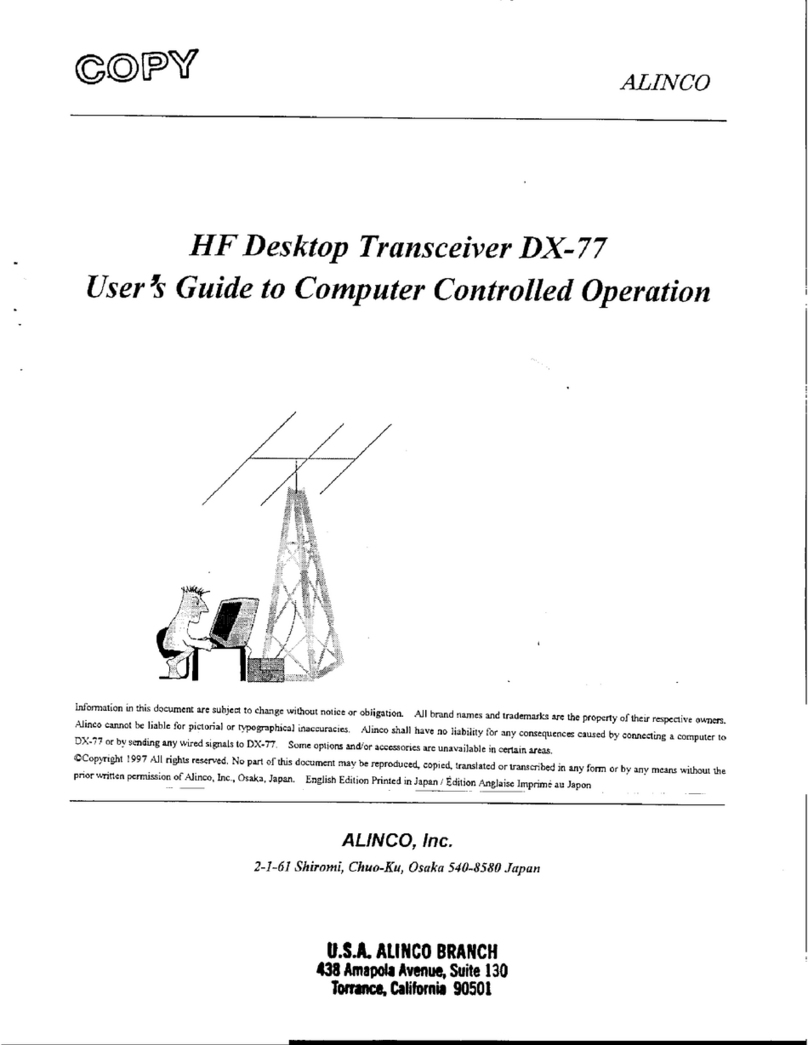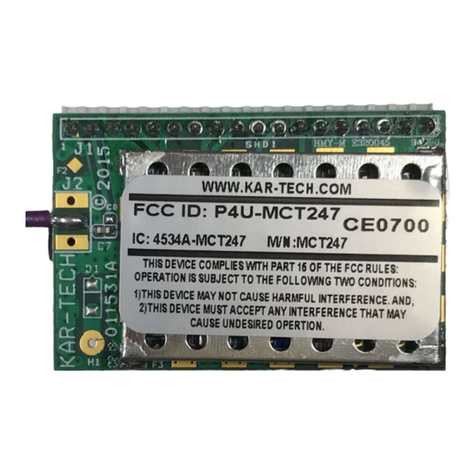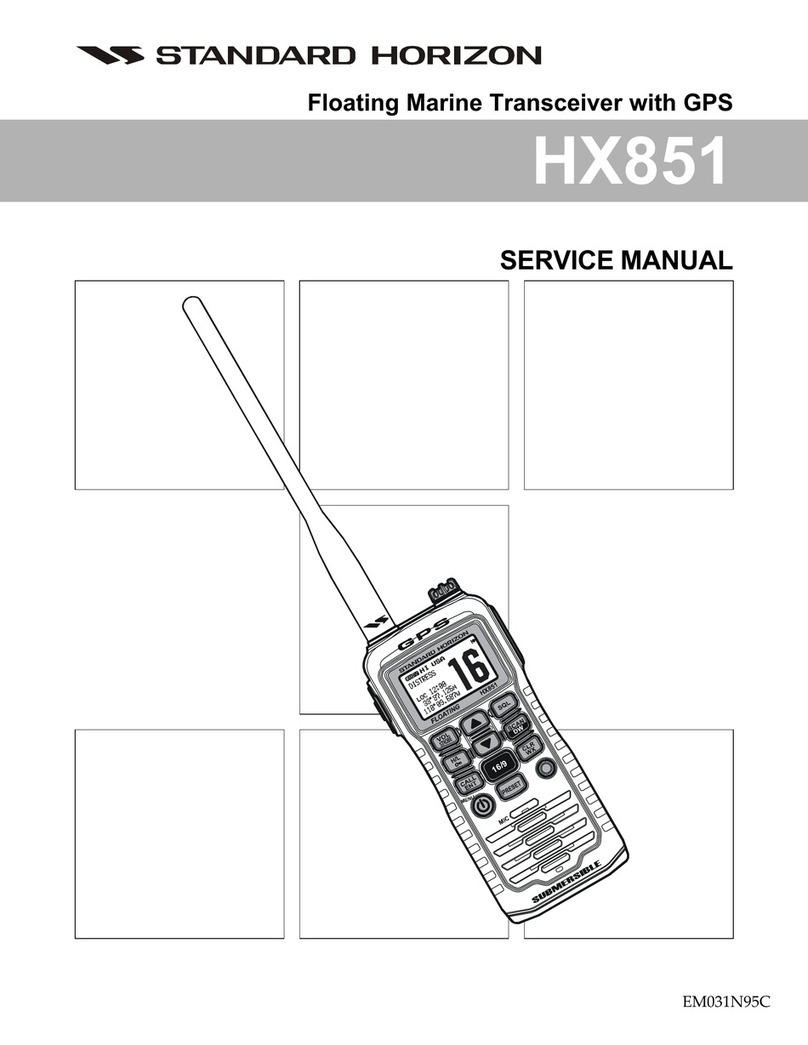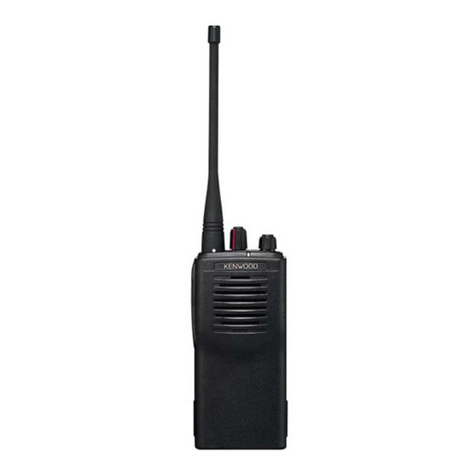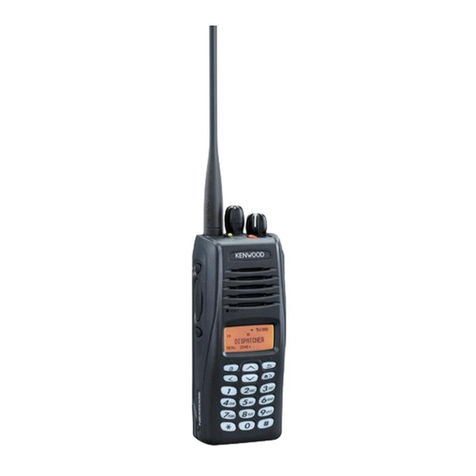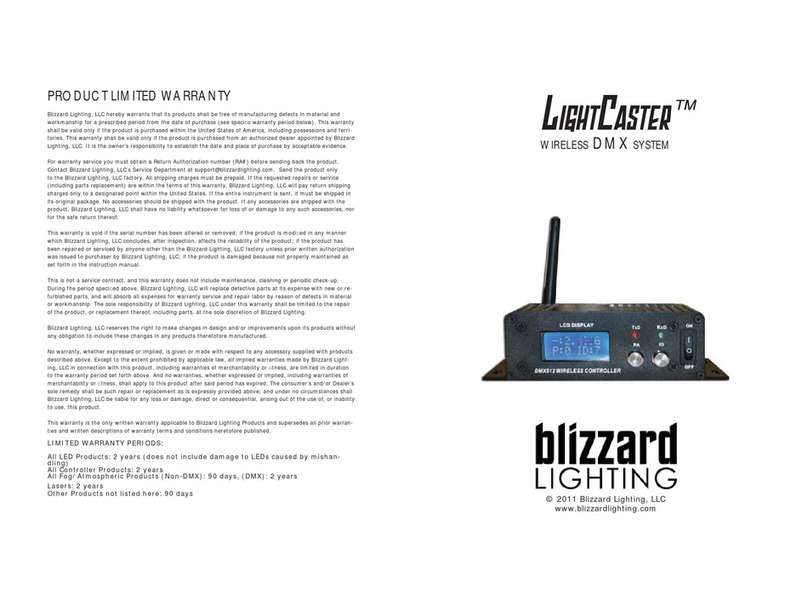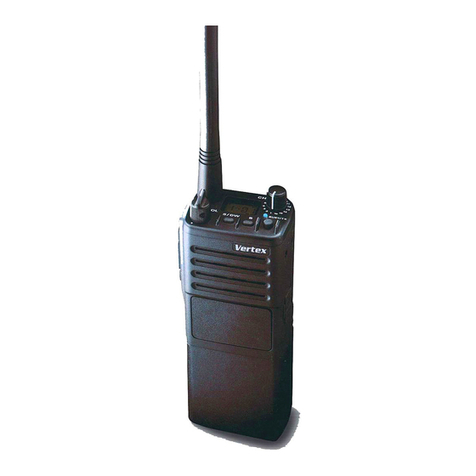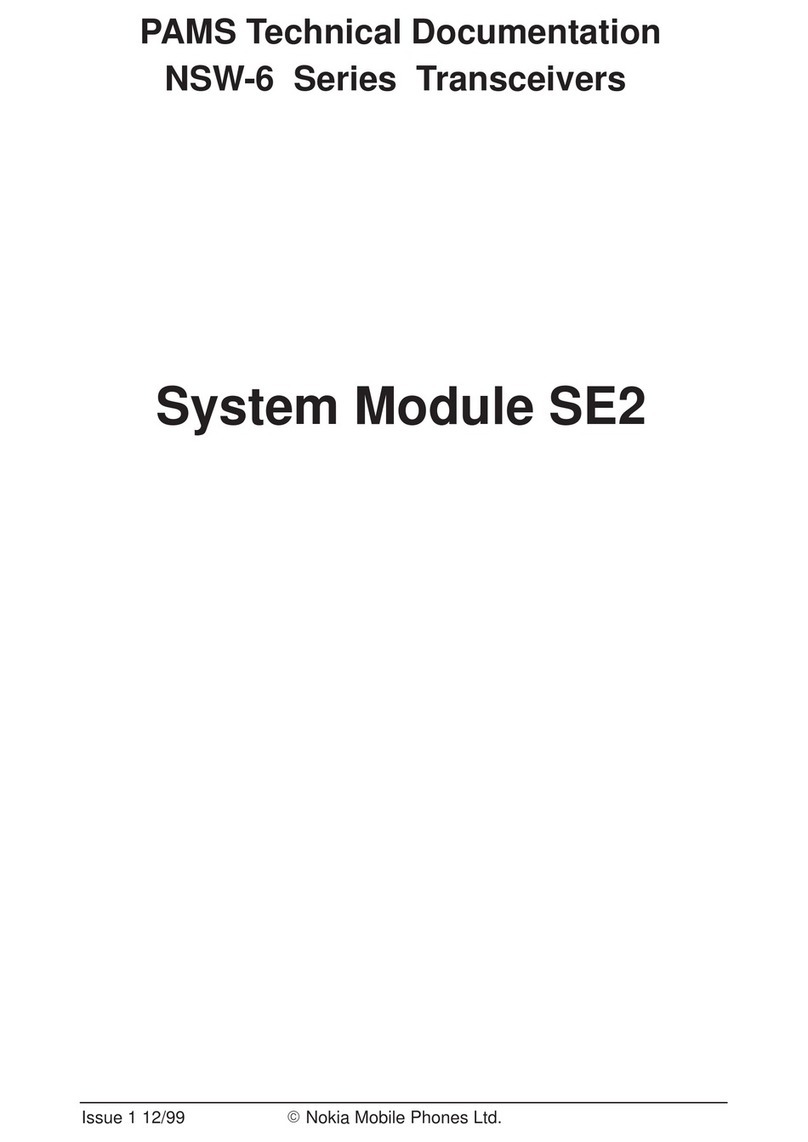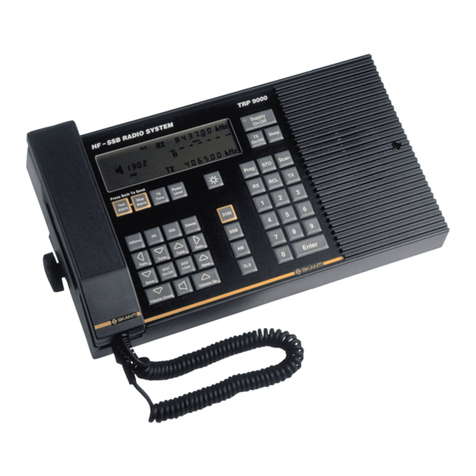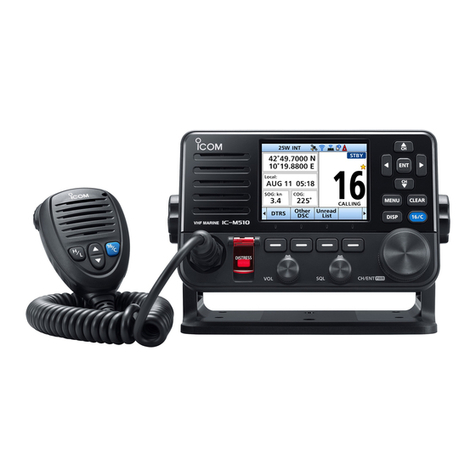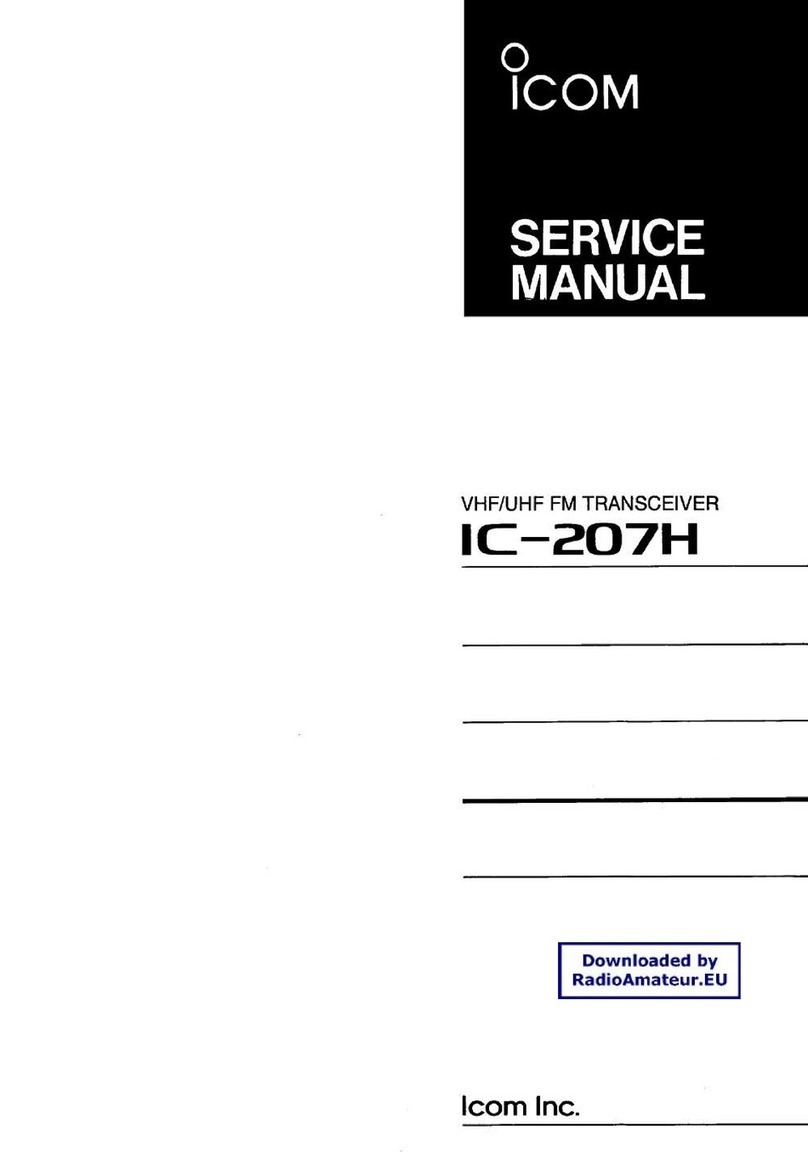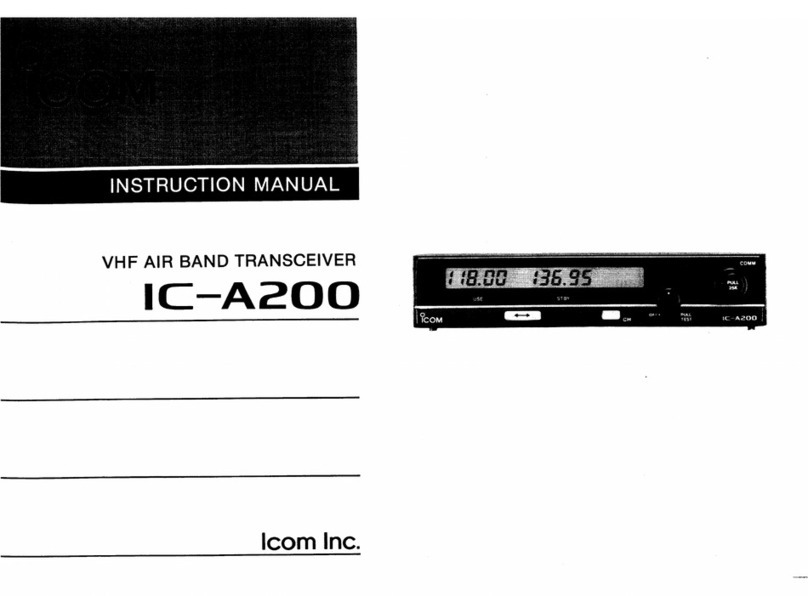Alinco DR-135T MkII User manual

VHF FM Mobile Transceiver
DR-135T
Instruction Manual
Thank you for purchasing your new Alinco transceiver.
This instruction manual contains important safety and operating instructions. Please read this
manual carefully before using the product and keep it for future reference.
Printed in apan
Copyright Alinco,Inc. 2002 PS0422
ALINCO,INC.
Head Office: Shin-Dai building 9th Floor
2-6, 1-Chome, Dojimahama, Kita-ku,
Osaka 530-0004, APAN
Phone:+81-6-4797-2136 Fax:+81-6-4797-2157
E-mail:[email protected]

NOTICE / Compliance Information Statement
This equipment has been tested and found to comply with the limits for a Class B digital device, pursuant
to part 15 of the FCC Rules
These limits are designed to provide reasonable protection against harmful interference in a residential
installation This equipment generates, uses, and can radiate radio frequency energy and, if not installed
and used in accordance with the instruction manual, may cause harmful interference to radio communica-
tions However, there is no guarantee that interference will not occur in a particular installation If this
equipment does cause harmful interference to radio or television reception, which can be determined by
turning the equipment off and on, the user is encouraged to try to correct the interference by one or more
of the following measures:
•Reorient or relocate the receiving antenna.
•Increase the separation between the equipment and receiver.
•Connect the equipment into an outlet on a circuit different from that to which the receiver is
connected.
•Consult the dealer or an experienced radio/TV technician for help.
Tested to Comply
With FCC Standards
FOR HOME OR OFFICE USE
Information in this document is subject to change without notice or obligation All brand names and
trademarks are the property of their respective owners Alinco cannot be liable for pictorial or typographi-
cal inaccuracies Some parts, options and/or accessories are unavailable in certain areas Changes or modi-
fications not expressly approved by the party responsible for compliance could void the user's authority to
operate the equipment
VHF FM Transceiver DR-135TMK
This device complies with Part 15 of the FCC Rules Operation is subject to the following two conditions:
(1) This device may not cause harmful interference, and (2) this device must accept any interference
received, including interference that may cause undesired operation
U S Representative:
ATOC Amateur Distributing LLC, 23 South High St Covington, OH 45318 USA Ph 937-473-2840
Copyright © 2000 All rights reserved No part of this document may be reproduced, copied, translated or
transcribed in any form or by any means without the prior written permission of Alinco Inc , Osaka,
Japan English Edition Printed in Japan

1
Contents
Before operating the transceiver ...................................... 3
Introduction ........................................................................ 3
1. New and Innovative Features ........................................ 4
2. Standard Accessories.................................................... 5
3. Initial Installation ............................................................ 6
For a base station set up ....................................................................... 6
For a mobile station set up .................................................................... 7
External power supply control & Power lamp functions ......................... 8
Power supply voltage display function ................................................... 8
4. Part Names and Functions ............................................ 9
Front Panel ............................................................................................ 9
ear Panel ........................................................................................... 10
Display ................................................................................................. 11
Microphone .......................................................................................... 12
5. Basic Operations .......................................................... 13
Turning the unit on and off ................................................................... 13
Audio Volume level setting .................................................................. 13
Squelch level setting ............................................................................ 13
VFO mode ........................................................................................... 14
[Change frequency by the channel step] ................................ 14
[Change frequency by 1 MHz step] ........................................ 14
Changing the channel step .................................................................. 15
EPEATE (DUPLEX) Operation ....................................................... 15
CTCSS / DCS setting .......................................................................... 16
Memory Mode ...................................................................................... 17
[Memory programming] ........................................................... 17
[Programmable data in the memory channel] ......................... 18
CALL mode .......................................................................................... 19
To receive signals ................................................................................ 19
To transmit ........................................................................................... 20
6. Parameter Setting Mode .............................................. 21
Channel Step setting ........................................................................... 22
Scan Type ............................................................................................ 22
Beep Sound ......................................................................................... 22
Time-Out-Timer .................................................................................... 23
TOT Penalty ......................................................................................... 23
APO - Auto Power OFF ....................................................................... 24
Tone-Burst-Frequency ......................................................................... 24
Busy-Channel-Lock-Out ...................................................................... 24
Theft Alarm .......................................................................................... 24
Alphanumeric Tag ................................................................................ 25
Dimmer ................................................................................................ 25

2
Contents
7. Advanced Operations .................................................. 26
SCANNING FUNCTION ...................................................................... 26
[VFO Scan] ............................................................................. 26
[Memory scan] ........................................................................ 26
• Program scan ....................................................................... 27
• Tone Scan ............................................................................. 27
• DCS scan ............................................................................. 28
KEY-LOCK FUNCTION ....................................................................... 28
TONE BU ST ...................................................................................... 28
Digital voice communication ................................................................ 29
WIDE / NA OW ( eduction of the Mic Gain/Deviation) ................... 29
AUTO-DIALE ..................................................................................... 30
THEFT ALA M .................................................................................... 31
CABLE CLONE ................................................................................... 33
8. PACKET OPERATION ................................................... 34
[To operate packet using EJ-41U] ........................................... 34
[To operate packet using an external TNC] ............................. 36
[To operate AP S®] ................................................................ 37
[SET UP] ................................................................................. 38
[AP S Operation] ................................................................... 38
9. Remote Control Operation .......................................... 39
[List of emote Control Keys] ................................................ 39
[Entering a frequency directly] ................................................ 40
[Entry method depending on tuning step] ............................... 40
10. Maintenance / Reference ........................................... 41
eset ................................................................................................... 41
Trouble Shooting ................................................................................. 42
11. Optional accessories ................................................. 43
12. Specifications ............................................................. 44
Appendix ........................................................................... 45
TNC Commands List ........................................................................... 45

3
Before operating the transceiver
Attention
• Do not remove the case or touch the interior components.
Tampering can cause equipment trouble.
• Do not use or keep the transceiver where it is exposed to direct sunlight, dusty
places, or near sources of heat.
• Keep the transceiver away from T 's or other equip-
ment when it interferes with reception.
• When transmitting for long periods of time at high
power, the transceiver might overheat.
• Turn the power off immediately if the transceiver
emits smoke or strange odors. Ensure the transceiver
is safe, then bring it to the nearest Alinco service
center.
Introduction
Thank you very much for purchasing this excellent Alinco transceiver. Our products
are ranked among the finest in the world. This radio has been manufactured with
state of the art technology and it has been tested carefully at our factory. It is de-
signed to operate to your satisfaction for many years under normal use.
PLEASE READ THIS MANUAL COMPLETELY TO LEARN ALL THE FUNC-
TIONS THE PRODUCT OFFERS. WE MADE EVERY ATTEMPT TO WRITE
THIS MANUAL TO BE AS COMPREHENSIVE AND EASY TO UNDERSTAND
AS POSSIBLE. IT IS IMPORTANT TO NOTE THAT SOME OF THE OPERA-
TIONS MAY BE EXPLAINED IN RELATION TO INFORMATION IN PREVI-
OUS CHAPTERS. BY READING JUST ONE PART OF THE MANUAL, YOU
RISK NOT UNDERSTANDING THE COMPLETE EXPLANATION OF THE
FUNCTION.

4
1. New and Innovative Features
Your new radio features some of the most advanced functions and reliable engineering
available anywhere. The ALINCO design philosophy is focused on developing innova
tive usable features, including the following:
• Three different styles of display are available on a large LCD panel including fre
quency, channel number or 7 digit alphanumeric label. The dimmer (bright/dim) makes
it easier to read the display at night.
• Simple, clean layout of keys and knobs ensure convenient operation.
• High quality materials are used throughout the product and a huge heat sink around the
chassis ensures stable and durable operation.
• Conventional or narrow FM mode can be selected.
• AM Air band reception capability.
• 100 fully programmable memory channels with alphanumeric memory channel labels.
• A DATA port is located on the front panel for easy access to external accessory connec
tions. A DSUB9 port is available on the rear to connect a PC for 1200/9600bps packet
operation.
• CTCSS, DCS and 4 different Tone Bursts are standard for selective calling and re
peater access worldwide.
• The Theft Alarm feature gives an extra measure of security for mobile installation.
• The transceiver has a cable clone capability.
• The optional EJ 41U board is available for data communications such as APRS® or
packet, without an external TNC.

5
2. Standard Accessories
Carefully unpack to make sure the following items are found in the package in addition to this manual:
• Transceiver
• Mobile mounting bracket. (FM0078Z)
• DC po er cable ith fuse holder (UA0038)
• Alarm cable A ( ith ire) (UX1259)
•
Alarm cable B (extension use) (UX1260)
• Theft Alarm stickers 2pcs. (PR0454)
• Instruction manual (PS0349)
• Hard are kit for bracket
• Microphone EMS-53 or EMS-57 ( ith
DTMF keypad)
Tapping screws
(M5*20mm) 4pcs. (AJ0003)
Black screws (M4*8mm)
4pcs. (AE0012)
Screws (M5*20mm)
4pcs. (AA0013)
Hexagonal nut (M5) 4pcs.
(AN0002)
Small (spanner) wrench.
(FM0079)
Washer (AZ0010)
S-washer (AZ0009)
Spare fuses (a pair)
2pcs. (EF0005)
The standard accessories may vary slightly depending on the version you have purchased. Please contact
your local authorized Alinco dealer should you have any questions. ALINCO and authorized dealers are
not responsible for any typographical errors there may be in this manual. Standard accessories may
change without notice.
Warranty Policy:
Please refer to any enclosed warranty information or contact your authorized Alinco dealer / distributor
for the warranty policy.

6
3. Initial Installation
Connect the microphone to the front panel of the transceiver.
Connect antenna port to a 50 ohm antenna that covers the two meter band, using good quality
50 ohm coaxial cable.
Antenna
External speaker
(if used)
Microphone
rear panel
For a base station set up
The Transceiver requires a 12 13.8VDC negative grounded power source.
Use a regulated power supply capable of providing continuous current of 12A or more.
Power supplies that do not meet those specifications may cause malfunction and/or damage to the
radio and will void the warranty. Alinco offers excellent communication grade power supplies as
optional accessories. Please contact your local authorized Alinco dealer.
DC
po er supply
DC po er cable
Black lead
Red lead
1
2

7
3. Initial Installation
For a mobile station set up
Location
The transceiver may be installed in any position in your car, where the controls and microphone are
easily accessible and it does not interfere with the safe operation of the vehicle or the performance
of the set. If your vehicle is equipped with air bags, be certain your radio will not interfere with
their deployment. If you are uncertain about where to mount the unit, contact your vehicle's manu
facturer.
Installing a Mobile Antenna
Use a 50 ohm coaxial cable to connect the antenna. Mobile antennas require an appropriate mount
ing base for proper installation and operation. For more information, see the documentation for
your antenna.
Installing the Transceiver
See the figure on the below.
Scre -fixed
base
Magnet base
Car body
Washer (M5)
Tapping scre
(M5 x 20 mm)
Mounting bracket
CAUTION: After installing your antenna, ensure that you have the best possible SWR reading.
High RF environments can cause severe damage to your unit. Ensure that you are not
in a high RF environment when operating the transceiver.

8
3. Initial Installation
External power supply control & power lamp unctions
Be sure the vehicle has a negative ground, 12VDC electric system before installation. Connect the
provided DC cable directly to the battery as shown below to minimize any possible ignition noise.
Be sure the vehicle has a large capacity battery as the use of the transceiver may overload the
electric system of the vehicle.
If the ignition key on/off feature is desired (optional feature), use the optional EDC 37 (For direct
connection to the circuit on the vehicle) or EDC 36 (for a Cigar Plug connection) cable. Connect
one of the cables between the ACC terminal or a Cigar Plug that operates with the vehicle ignition
or ACC switch on the vehicle and EXT POWER jack on the rear side of the unit. (Note: In many
cars, the cigar lighter plug is always powered. If this is the case, you cannot use it for the ignition
key on/off function.) If this option is selected, the unit can be turned on/off either manually or
automatically in accordance with the ignition key position:
1. When the ignition key is turned to ACC or ON (Start) position with the radio turned
off, the power switch illuminates. The illumination will be turned off when the igni-
tion key is turned to the off position. To turn on the unit, press the power switch
manually while it is illuminated (while ignition key is at ACC or ON position).
2. When the ignition key is turned to ACC or ON position with the radio's power switch
on, the unit turns on automatically and the power switch will be lit. Turn the ignition
key to OFF position or manually turn the power switch off to shut down the radio.
The power consumption when using the additional cable is 5mA.
For operation without this option, use the power switch to turn the unit on/off.
Power supply voltage display unction
After connecting the transceiver to the power supply, the supply voltage can be confirmed by
pressing the SQL key together with the FUNC key. The supply voltage to the transceiver is then
seen on the display.
The transceiver will return to its normal operation when the power is switched OFF.
The display immediately changes as the voltage supply changes.
It also displays voltage during transmission.
IMPORTANT:
The range of the displayed voltage is only from 7V - 16VDC. Because the displayed value
is estimated, please use a voltmeter when a more precise reading is desired.
DC cable
Battery
Cigar-Plug connection
ACC terminal
Ext. Po er jack

9
4. Part Names and Functions
Front Panel
10
12
4 5 67893
11
2
1
•Primary Functions
No.
Key Function
1PWR Power turns ON / OFF whenever switch is pressed.
2 Volume knob Adjusts the volume level.
3Dial
Changes the frequency memory channel and scan direction.
4 FUNC/ ET Sets the function mode to access additional settings.
5 V/M/MW Switches between VFO mode and memory mode.
6 MHZ/ HIFT Changes the frequency in 1 MHz steps.
7
T /DC /LOCK
Sets the tone squelch and DCS setting.
8 CALL/H/L Switches to CALL mode.
9 QL/D Sets the squelch level
10
DATA Terminal
Used in clone and theft alarm functions.
11
TX Light indicator
Lights during transmission.
12
Mic. Connector
Connection port for supplied microphone.
•Functions which can be activated while F appears, after
pressing the FUCN Key.
No.
Key Function
4 FUNC/ ET
Confirms selection of other functions and exits the function mode.
5 V/M/MW Write in to memory channel.
6 MHZ/ HIFT Sets the shift direction and the offset frequency.
7
T DC /LOCK
Sets the key lock function.
8 CALL/H/L Switches between HI MID and LOW power transmission.
9 QL/D
Accesses the packet communication mode. / AM reception mode (DR-235T only)

10
4. Part Names and Functions
Rear Panel
3
21 4
No.
Key Function
1 Ext. Power jack Terminal for connecting optional EDC-37 for
use with ignition key on/off function.
2
External peaker Terminal
Terminal for optional external speaker
3 D UB-9 Connector Terminal where external TNC may be con-
nected for packet use. With optional EJ-41U
connects internal TNC to the computer.
4 Antenna Connector Connection for 50 ohm coaxial cable and
antenna.
•
Functions that can be activated while pressing the FUNC Key
No.
Key Function
1PWR Reset to factory default settings.
5 V/M/MW Erase the memory.
6 MHZ/ HIFT Switches to wide / narrow mode reception.
7
T DC /LOCK
Sets the auto dialer.
8 CALL/H/L Accesses the clone function mode.
9 QL/D Accesses the power supply voltage indication mode.
• Functions that require continuous pressing to be activated.
No.
Key Function
4 FUNC/ ET When pressed for 2 seconds accesses the set mode.
9 QL/D
When pressed within 1 second the monitor function is on.

11
4. Part Name of Functions
Display
10
11
12131416 15171819
8
3
9
1
2
4
5 6 7
No.
Key Function
1QL Appears when setting the squelch level.
2MAppears when in memory mode.
3Indicates the memory channel number in memory mode.
4
.Decimal point
Appears when setting the theft alarm function.
5
.Decimal point
Appears when setting the skip level.
6
.Decimal point
Indicates the decimal point of frequency and the scanning function.
7Indicates the frequency or memory name.
8Appears when a signal is being received.
9 -meter
Indicates the relative signal strength level of transmission / reception.
10 Appears when in packet mode.
11 key lock Appears when setting the key lock.
12 DC Appears when setting the DCS.
13 Appears when setting the tone squelch.
14 +- Appears when setting the shift.
15 A Appears during AM reception.
16 Nar Appears when in narrow band reception mode.
17 Lo Appears when transmission power is set to LOW.
18 Mi Appears when transmission power is set to MID.
19 Appears when FUNC Key is pressed.

12
4. Part Names and Functions
Microphone
Mic. Connector Diagram (While looking in the front view of the con-
nector)
17
26
3
45
8
PTT
MIC MIC GND
Remote control
DC 5V
DOWN
GND
UP
tandard Option
No.
Key Function
1UP
Increase the frequency memory channel number or setting value.
2 DOWN
Decrease the frequency memory channel number or setting value.
3 PTT Press the PTT(Push-To-Talk)key to transmit.
4 DTMF DTMF tone keys
DTMF / REMOTE
5
witch
6 Lock witch Locks out the UP and DOWN keys.
7MIC Speak here during transmission.
Set to DTMF when you don’t want to operate remote con-
trol functions. So that DTMF keys do not function except
during transmit to send DTMF codes manually.

13
5. Basic Operations
Turning the unit on and off
Press the power switch or turn the ignition key to ACC or ON
position according to the option selected during installation.
Press the power switch again or turn the ignition key to OFF
position to turn off.
Audio Volume level setting
Rotate the VOL knob clockwise to increase the audio le el,
counterclockwise to decrease. Set it at the desired le el.
Squelch level setting
A squelch eliminates white-noise (the background noise when
a signal is not recei ed).
Higher le el settings will keep the squelch “closed” more
tightly for quieter monitoring, but weak signals will not be
heard. Lower settings allow weaker signals to “open” the
squelch but noise may also cause it to open.
1. Press SQL key. SQL icon appears on the dis-
play and the squelch level will be shown at the
position where the memory number is dis-
played. 21 levels, between 0 and 20, are avail-
able. “0” is the lowest setting.
2. By rotating the main dial or by using the UP/
DOWN keys on the microphone, adjust the
squelch to the desired level. To return to nor-
mal use, press PTT or any key on the front
panel; or if there are no operations within 5
seconds, the unit will store the setting and will
return to its original status.
The new squelch le el will be stored in the CPU until another
adjustment is done.
Squelch level
PWR key
VOL knob
Minimum
volume
Maximum
volume

14
5. Basic Opera ion
VFO mode
VFO tuning is set as a default mode at the factory. VFO ( ari-
able frequency oscillator) allows you to change the frequency
in accordance with the selected channel step as you rotate the
main dial or by using the UP/DOWN keys on the microphone.
VFO mode is also used to program the data to be stored in the
memory channels or to change the parameter settings of the
transcei er.
1. Identify the current mode by checking the dis-
play. If “M” or “C” icon is NOT displayed on
it, the unit is already in the VFO mode.
2. Otherwise press “V/M” keys until those icons
are gone.
[Change frequency by the channel step]
Rotate the main dial clockwise to increase the frequency, coun-
terclockwise to decrease. The UP/DOWN keys on the micro-
phone act in the same way.
[Change frequency by 1 MHz step]
This will enable a quick change of frequency in 1 MHz steps:
1. Press MHz key. The digits after 100 kHz will
disappear from the display.
2. Follow the same sequence as above to change
the value.
VFO mode
Dial
Frequency
decrease
Frequency
increase

15
5. Basic Opera ion
RE EATER (DU LEX) Operation
Shift Direction and Offset frequency setting
Con entional repeaters are operated in the DUPLEX mode.
It recei es an incoming signal (UP-LINK) on one frequency
and re-transmits on another (DOWN-LINK). The difference
between these two frequencies is called the offset frequency.
If the UP-LINK frequency is higher than the DOWN-LINK
frequency, the direction is positi e, and if it is lower, the shift
direction is negati e. The offset is ariable between 0 to 99.995
MHz on this unit.
Press the F key. While the F icon stays on the display, press
MHz key. The display shows the current status of shift direc-
tion and offset frequency. The default alue is 0.60 MHz (600
kHz) in the negati e direction. Press MHz key until the de-
sired offset direction is set. If SIMPLEX mode (without chang-
ing transmit and recei e frequency) is desired, select the po-
sition where both - and + icons disappeared.
Shif release
at-600 kHz
Changing the channel step
1. Be sure the unit is in VFO mode. Refer to page
21 to enter into the SET mode.
2. Select the channel step parameter setting using
the tuning knob. The current channel step will
be displayed as below.
3. Press PTT or any one of the keys except SQL
on the front panel to enter the desired step into
the transceiver’s memory. The display will then
return to the original status.
Please note that settings below 10 kHz may be automatically
corrected according to the selected step.
Display for channel step
1. Rotate the dial or use UP/DOWN keys on the microphone to change the shift fre-
quency. It changes in accordance with the channel step setting.
2. In this mode, if the F key is pressed again, the offset frequency can be changed in
1 MHz steps for faster setting.
3. Press PTT or any key except F or MHz on the front panel to return to the original
status.

16
5. Basic Opera ion
CTCSS / DCS setting
Many repeaters require a CTCSS tone or a DCS code encode setting as a “key” to access the
system, so-called “selecti e-calling”. Sometimes, CTCSS or DCS decode features are used on the
output of a repeater so they can be used as a squelch. In this mode, regardless of the main squelch
status, the audio can be heard ONLY when the matching tone/code signal is recei ed. The combi-
nation of CTCSS squelch and DCS function is not a ailable; only one or the other may be used for
a gi en memory channel.
1. Press TS/DCS key. The current setting will be
displayed with T/SQ/DCS icons and relative
frequency/code. Press the same key to select
T/SQ/DCS setting.
2. The numbers (such as 88.5) represent the CTCSS frequency in Hz. When it is dis-
played with the T icon only, the unit transmits the sub-audible tone while the PTT is
pressed (encode) and the repeater access is enabled (assuming the repeater is using
88.5).
3. Press the same key again so that the SQ icon shows up on the display. This is the
CTCSS decode frequency. This enables CTCSS squelch (or Tone Squelch, TSQ).
4. Press it again so that the 3-digit number and DCS icon is displayed. This is the DCS
code, and it enables DCS encoding and decoding.
T
88.5
T/SQ
88.5
DCS
023
The original s a us
For 2 - 4, rotate the main dial or press the UP/DOWN keys to change tone or code. Press any key
(Except TS/DCS, UP/DOWN keys) to enter the setting and return to original status. The T/SQ/
DCS icon will remain on the display to show the current status. To exit, simply use the TS/DCS key
and press it until the relati e status icon T/TQ/DCS disappears.
The CTCSS encoding and decoding frequencies may be set differently. The encode setting fre-
quency automatically relates to the decode setting, but decode setting does not affect encode. The
standard set of 39 different CTCSS tones are a ailable as shown on the chart below. DCS encode/
decode cannot be separated and are selectable from 104 codes as shown below.
NOTE: Depending on he devia ion level of he incoming DCS coded-signal, your radio may no open he DCS
squelch. If his occurs, re urn o DCS se ing mode and press he CALL key. A decimal poin appears on
he 10 MHz order; hen se he desired code. This se ing can also be s ored in a memory channel.
023 025 026 031 032 036 043 047 051 053 054
065 071 072 073 074 114 115 116 122 125 131
132 134 143 145 152 155 156 162 165 172 174
205 212 223 225 226 243 244 245 246 251 252
255 261 263 265 266 271 274 306 311 315 325
331 332 343 346 351 356 364 365 371 411 412
413 423 431 432 445 446 452 454 455 462 464
465 466 503 506 516 523 526 532 546 565 606
612 624 627 631 632 654 662 664 703 712 723
731 732 734 743 754
DCS Codes
67.0 69.3 71.9 74.4 77.0 79.7
82.5 85.4 88.5 91.5 94.8 97.4
100.0 103.5 107.2 110.9 114.8 118.8
123.0 127.3 131.8 136.5 141.3 146.2
151.4 156.7 162.2 167.9 173.8 179.9
186.2 192.8 203.5 210.7 218.1 225.7
233.6 241.8 250.3
CTCSS Tone Frequency(Hz)

17
5. Basic Opera ion
Memory Mode
The memory mode on this transcei er pro ides up to 100 channels (0-99), 1 call (quick recall ch)
and a pair of program-scan “edge memory” channels for quick, easy access to the preprogrammed
frequencies with different parameter settings.
Memory mode
Memory channel
during the unregistered channel
1. Press V/M key. M icon appears on the display
to indicate that the unit is in the memory mode.
Repeat to switch the mode between VFO and
memory.
2. In memory mode, rotate the main dial or press
UP/DOWN keys to change the memory chan-
nel number.
3. To change the number by units of 10, press
FUNC and rotate the main dial or press UP/
DOWN keys while F icon is on the display.
[Memory programming]
1. Return to VFO mode by pressing V/M key. Re-
ferring to the list below for the programmable
parameters, program in the VFO mode to the
desired frequency and settings to be stored later
in the memory.
2. When all the settings are complete, press FUNC
key. The F, and M icons appear and a memory
channel number will be indicated on the
display.
3. Rotate the main dial or press the UP/DOWN
keys to select the desired memory channel num-
ber into which the current VFO settings will be
copied. An empty channel is shown with a flash-
ing M icon. It may be a good practice to “allo-
cate” memory channels in order, such as 0-9
for local repeaters, 10-19 local simplex, 20-49
repeaters within the area, 50-79 for repeater re-
serve, 80-98 simplex reserve. It makes refer-
ences easier for the operation and future modi-
fications of the memory channels.

18
5. Basic Opera ion
[Programmable data in the memory channel]
Some features will be explained later, so please read this instruction manual thoroughly prior to
programming memories.
Memory channels including 0 - 99 and CALL can store following:
• Frequency
• Shift frequency
• Shift direction
• CTCSS tone both encode and decode
• Tone Squelch setting
• DCS code both encode and decode
• DCS squelch setting
• Scan skip channel
• Busy Channel Lock Out setting
• Priority monitoring frequency (PC programming required)
• Normal/Narrow FM width
• AM air-band recei e
NOTE: Only he frequency can be s ored in PH and PL channels o de ermine he edges of he program
scan range.
4. While F icon is on the display, press MW key.
The VFO settings are copied to the memory
channel and a beep will sound. The memory
channel can be over-written if a previously pro-
grammed channel is selected (the memory
channels shown with a stable M icon).
5. To program the CALL channel (quick recall)
select the channel shown with CH-C on the dis-
play. Save Ch99 to store the setting used for
the Alarm operation, which will be explained
later. Use PL and PH for Program scan setting,
which will be explained in the advanced op-
erations chapter.
6. To delete a programmed channel, select it in
memory mode, press FUNC key then press the
MW key while F icon is on. The memory is de-
leted and a beep sounds. The M icon starts flash-
ing showing that this channel is now empty.
7. To undo delete, repeat 6. However, the Undo
function becomes impossible once the channel
or the mode is changed.
Other manuals for DR-135T MkII
4
This manual suits for next models
1
Table of contents
Other Alinco Transceiver manuals
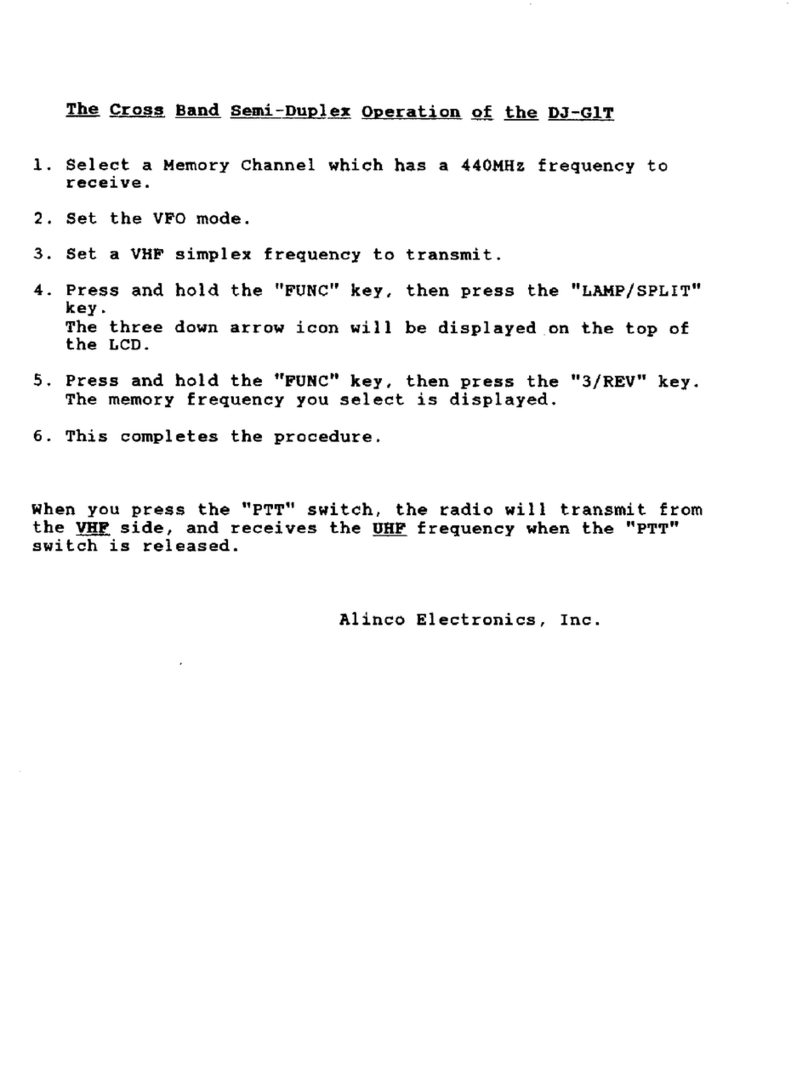
Alinco
Alinco DJ-G1T User manual
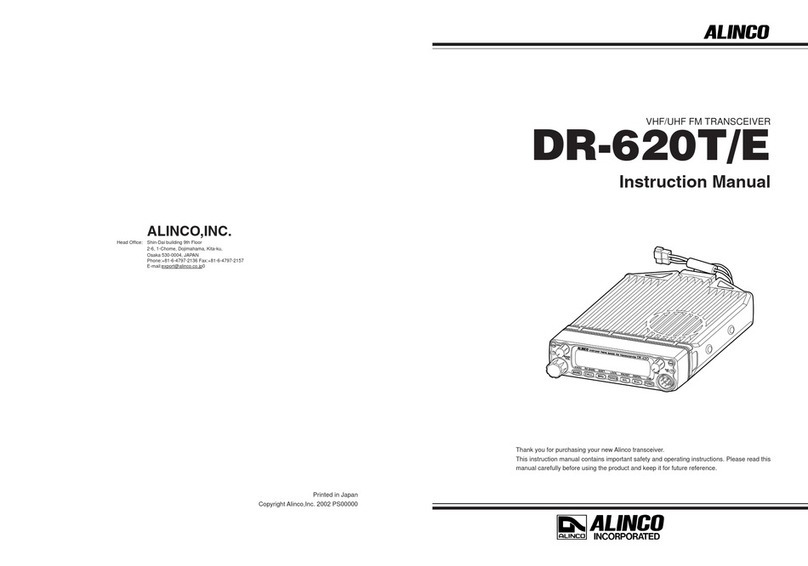
Alinco
Alinco DR-620T/E User manual
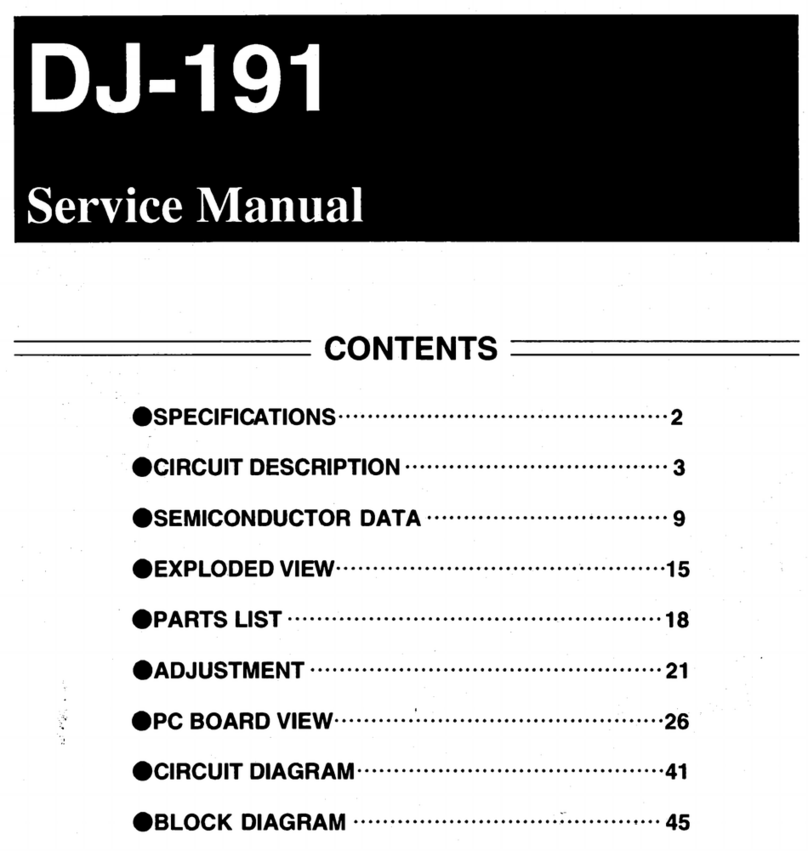
Alinco
Alinco DJ-191 User manual
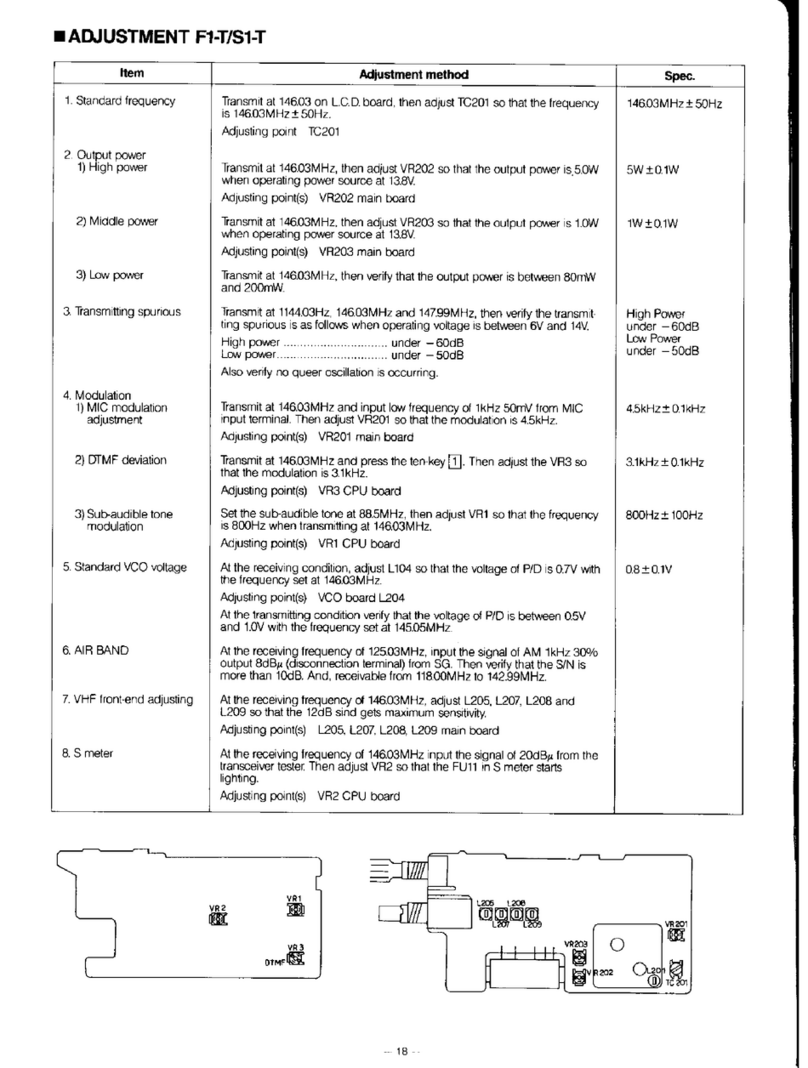
Alinco
Alinco F1-T Guide

Alinco
Alinco DJ-160T User manual
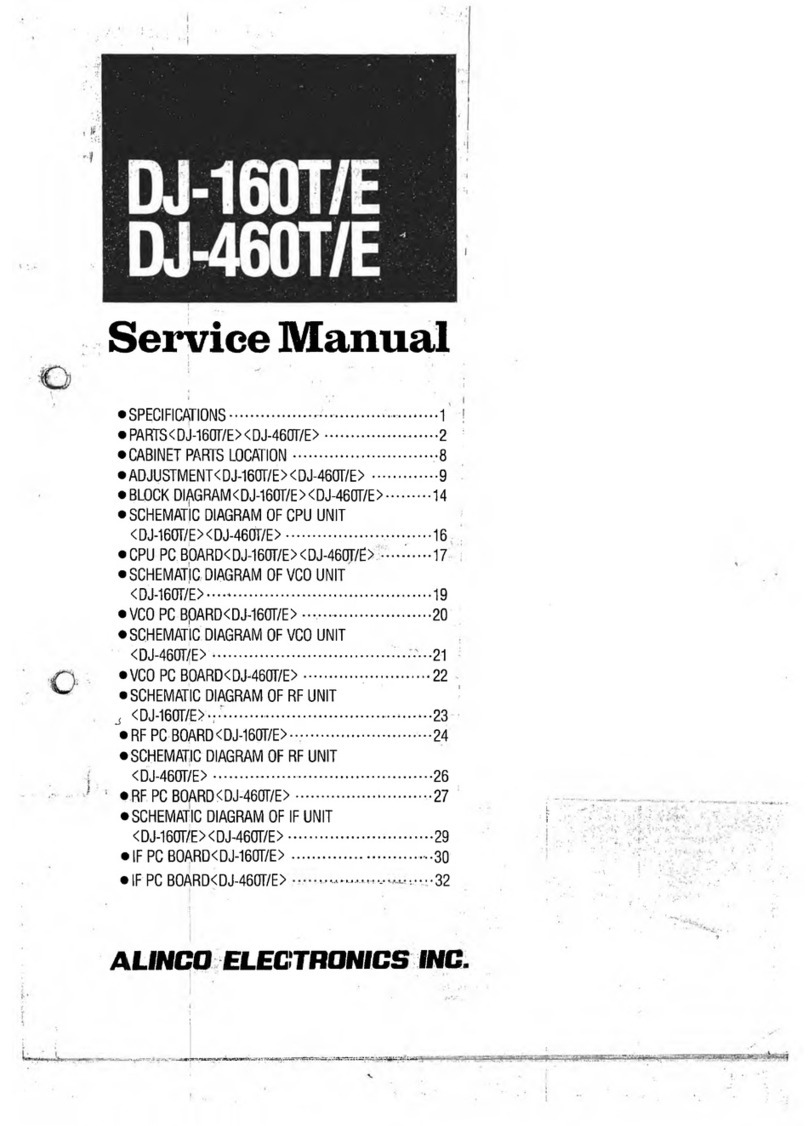
Alinco
Alinco DJ-160T User manual

Alinco
Alinco DR-638H User manual
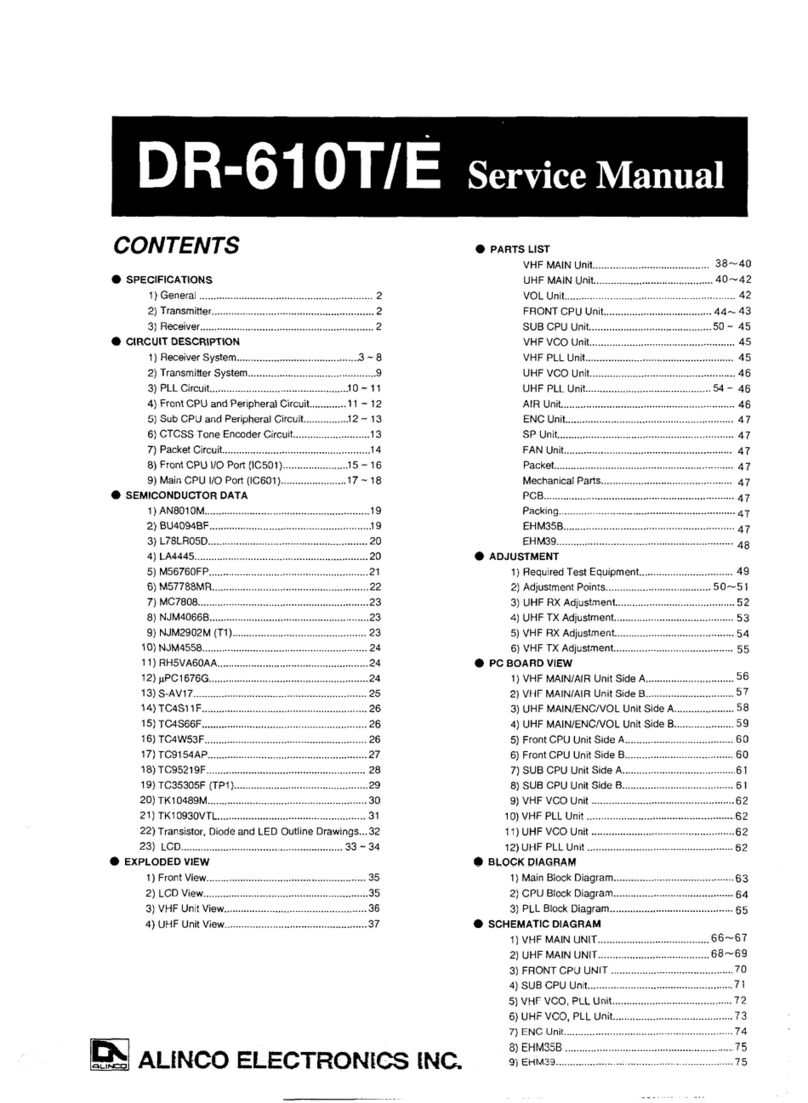
Alinco
Alinco DR-610T User manual
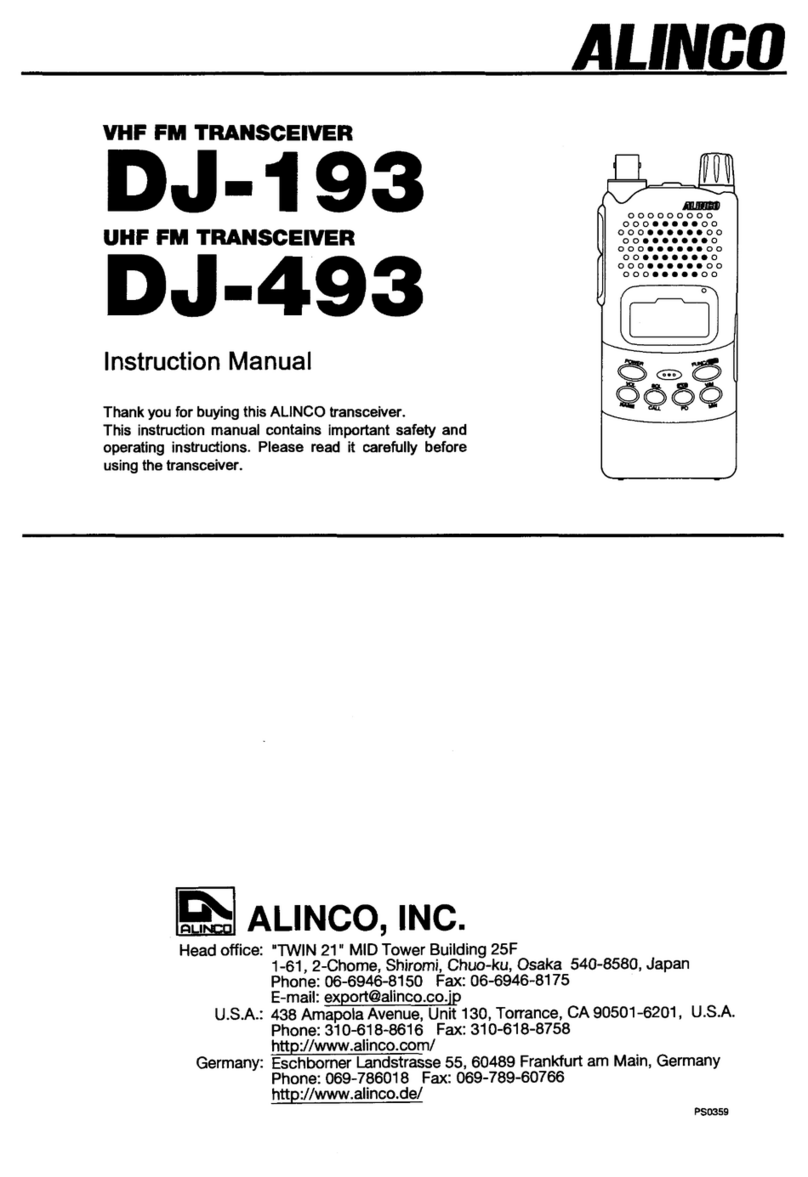
Alinco
Alinco DJ-193 User manual
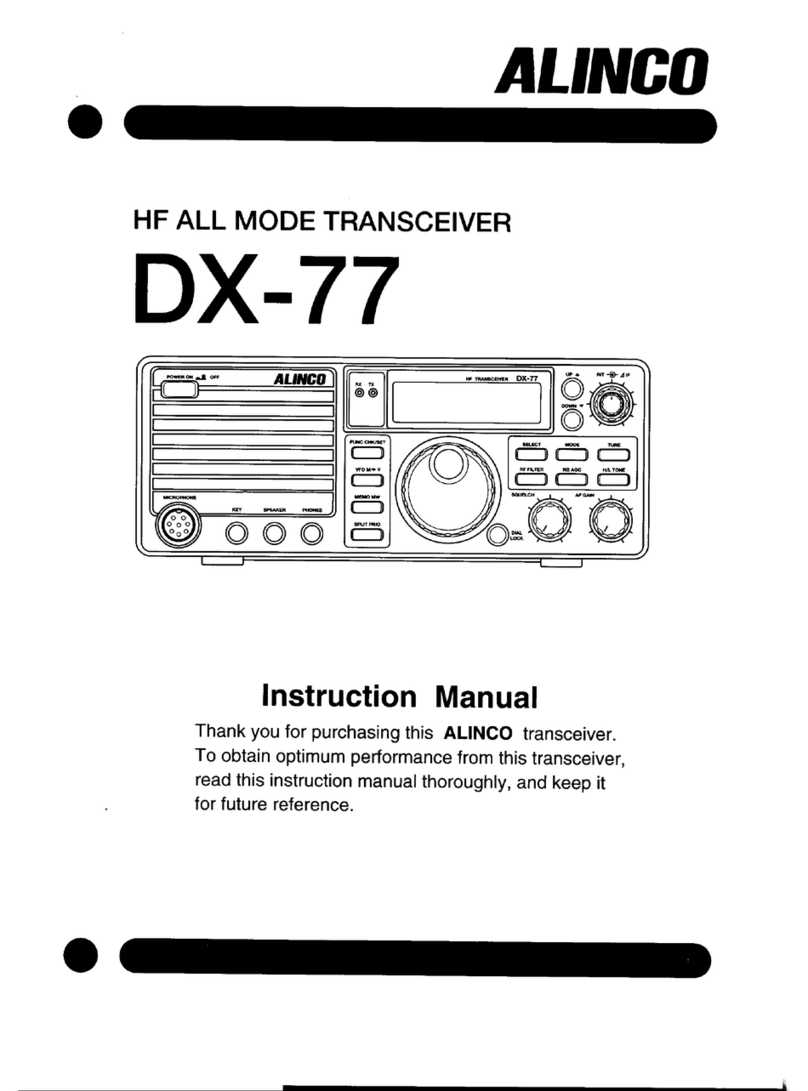
Alinco
Alinco DX-77 User manual
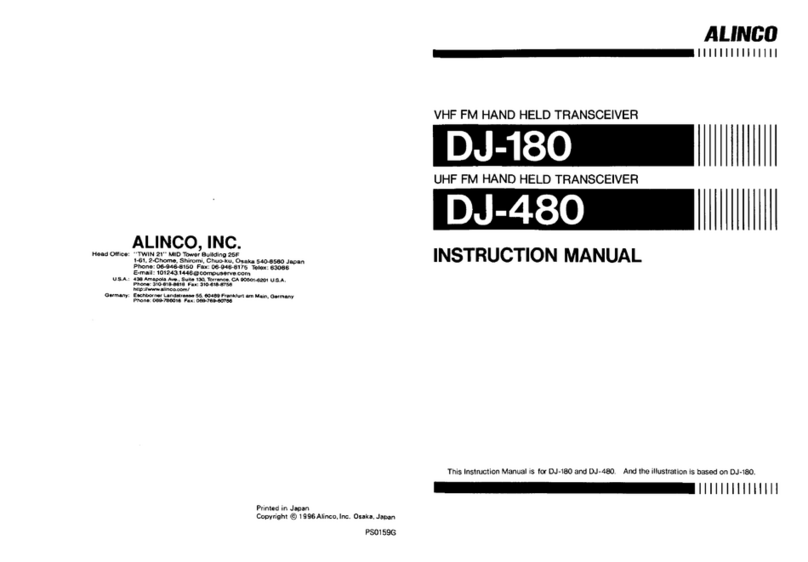
Alinco
Alinco DJ-480 User manual
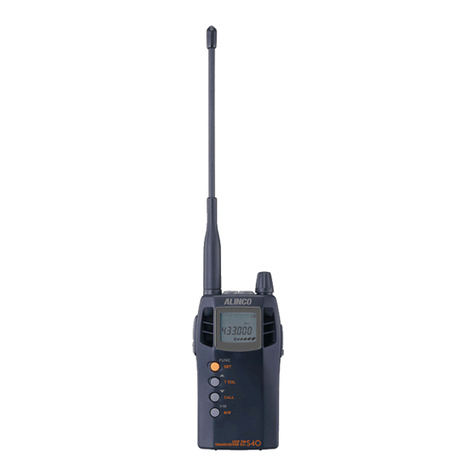
Alinco
Alinco DJ-S40T User manual
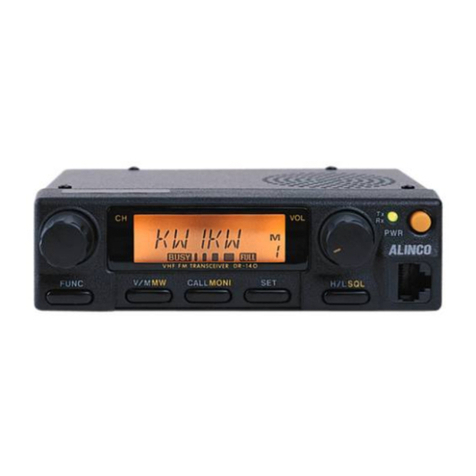
Alinco
Alinco DR-140T User manual

Alinco
Alinco DJ-G1T User manual
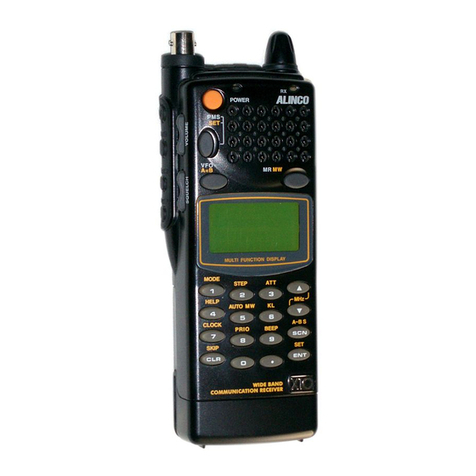
Alinco
Alinco DJ-G5T/E User manual

Alinco
Alinco DJ-493 User manual
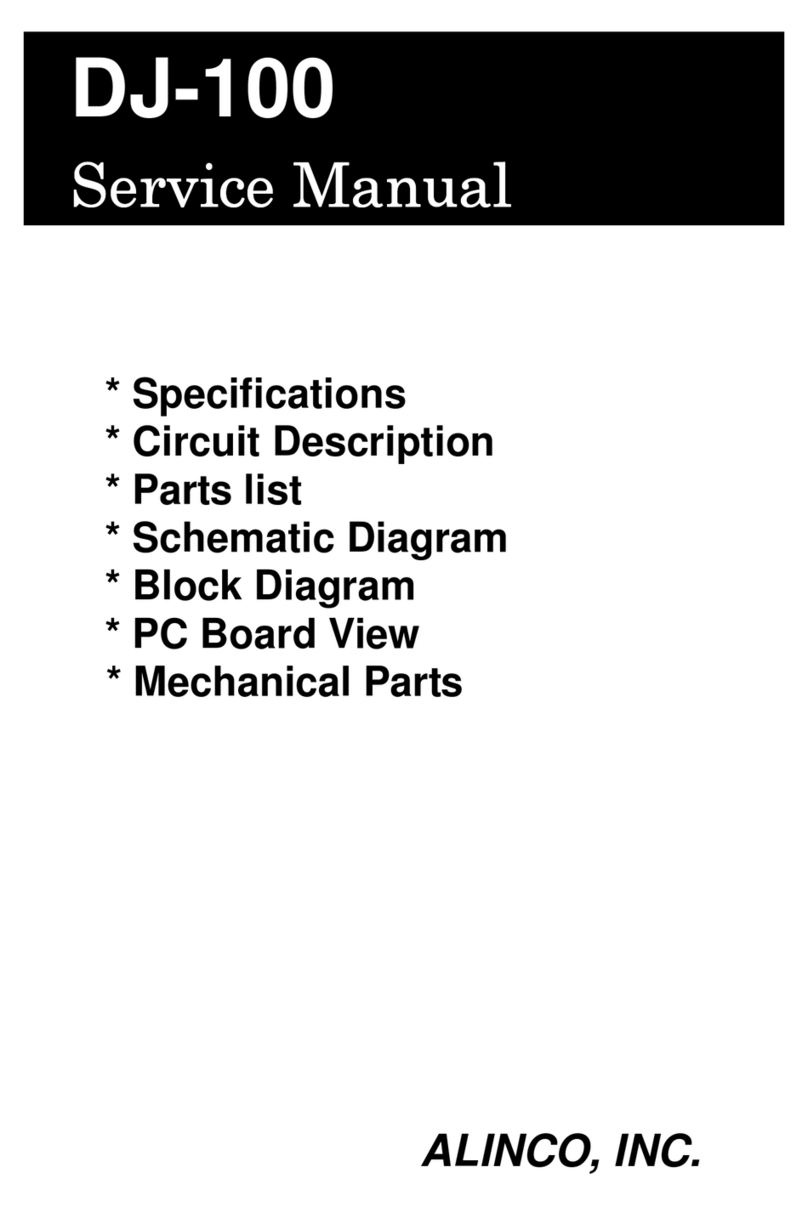
Alinco
Alinco DJ-100 User manual

Alinco
Alinco DR-MD500 User manual
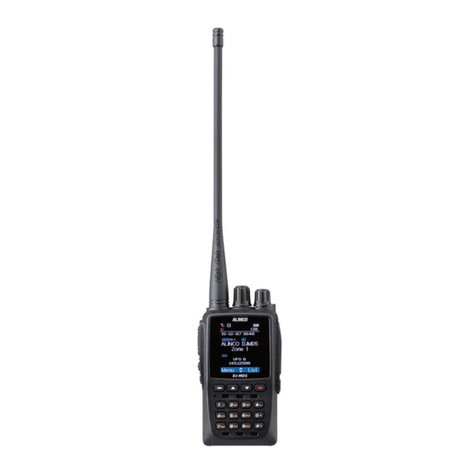
Alinco
Alinco DJ-MD5XLT User manual
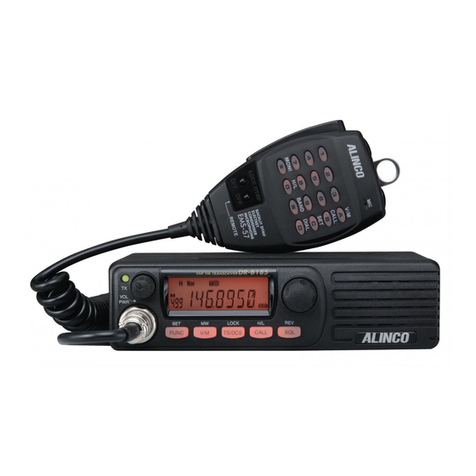
Alinco
Alinco DR-B185HT User manual
